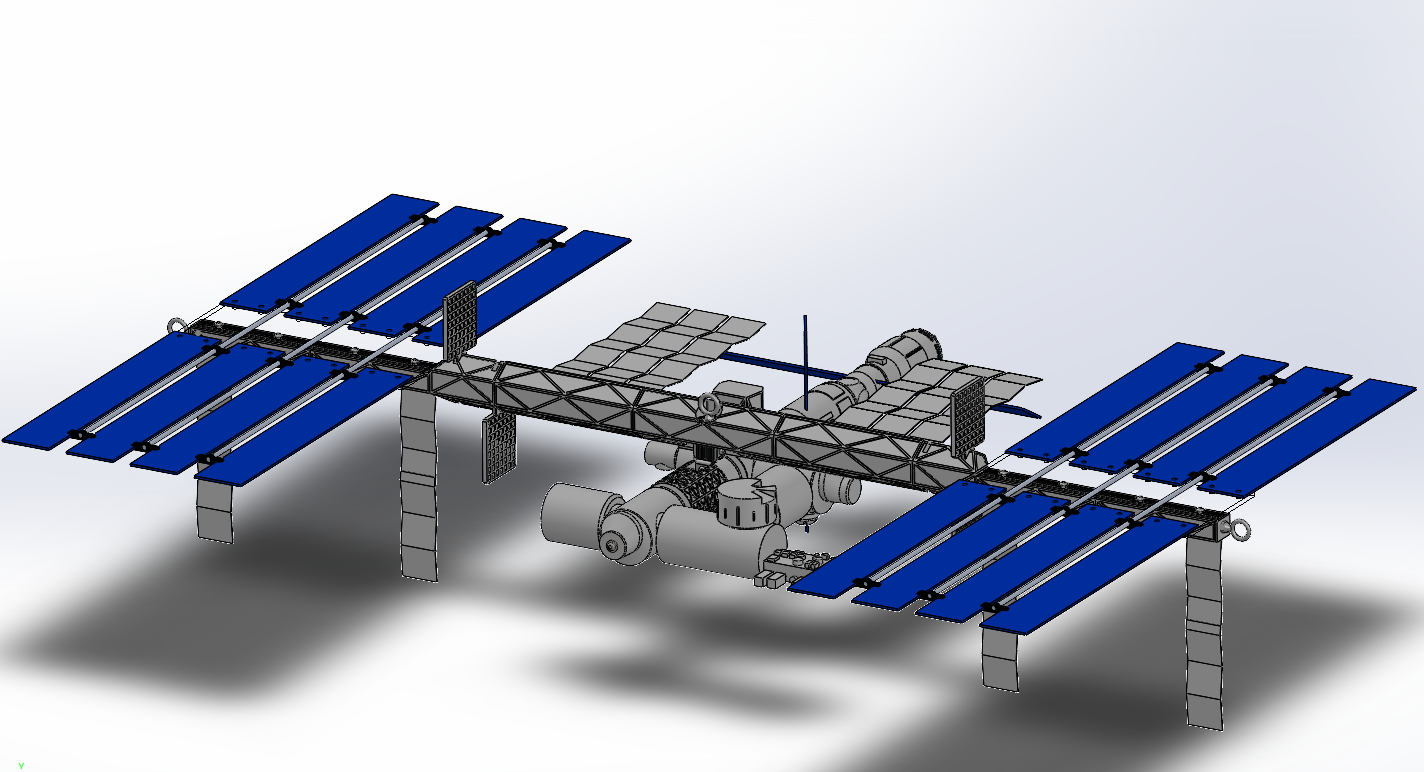Model ISS - MIT
In February 2020, I started working with Ben Martell and Chris Dalke on designing an exhibit for the MIT SpaceTech event to be held in March. The SpaceTech event is a part of the larger MIT Space Week program which aims inspire the next generation of space-minded individuals through presentations of current research and talks from important industry presenters and Alumni. Our exhibit was setup to be a stop along the Space Trail which is interactive tour aimed at groups of middle and high school students. The plan was create a mostly 3D printed 1:50 scale model of the International Space Station to suspend within a 10’x10’x10’ frame. Around the edges, there would be little animatronic models of some key subsystems on the ISS such as the Cupula, the Solar Panel Array and the Canadarm.

The model ISS consists of two 8020 aluminum extrusions which are fixed together and covered in a number of 3D printed modules, most of which just press fit onto the aluminum. All the 3D printed parts were printed on our personal three personal printers using PLA and the solar panel arrays are made from laser cut acrylic and reinforced with a set of thin aluminum rods to make them more rigid. Because of the tight timeline for the project, the modules were designed as an abstract representation of the ISS, they pull out the key aesthetic elements and attempt to recreate them using simple features that can be easily printed. We used this model from NASA as reference during the design process which really made the whole project possible.

Unfortunately just a week before the 2020 event, the COVID-19 pandemic reached the US and the event was cancelled plunging our mostly completed exhibit into limbo. The project stayed there until the summer of 2021 where we got permission to permanently install the main ISS model in the lobby of one of the MIT AeroAstro buildings. Since the model would now be hung long term from the ceiling and not from and extruded aluminum frame, we had to re-design the mounting points and overhaul the structural integrity of the model so years of UV deterioration won’t cause it to break and fall on an group of unexpected students.

